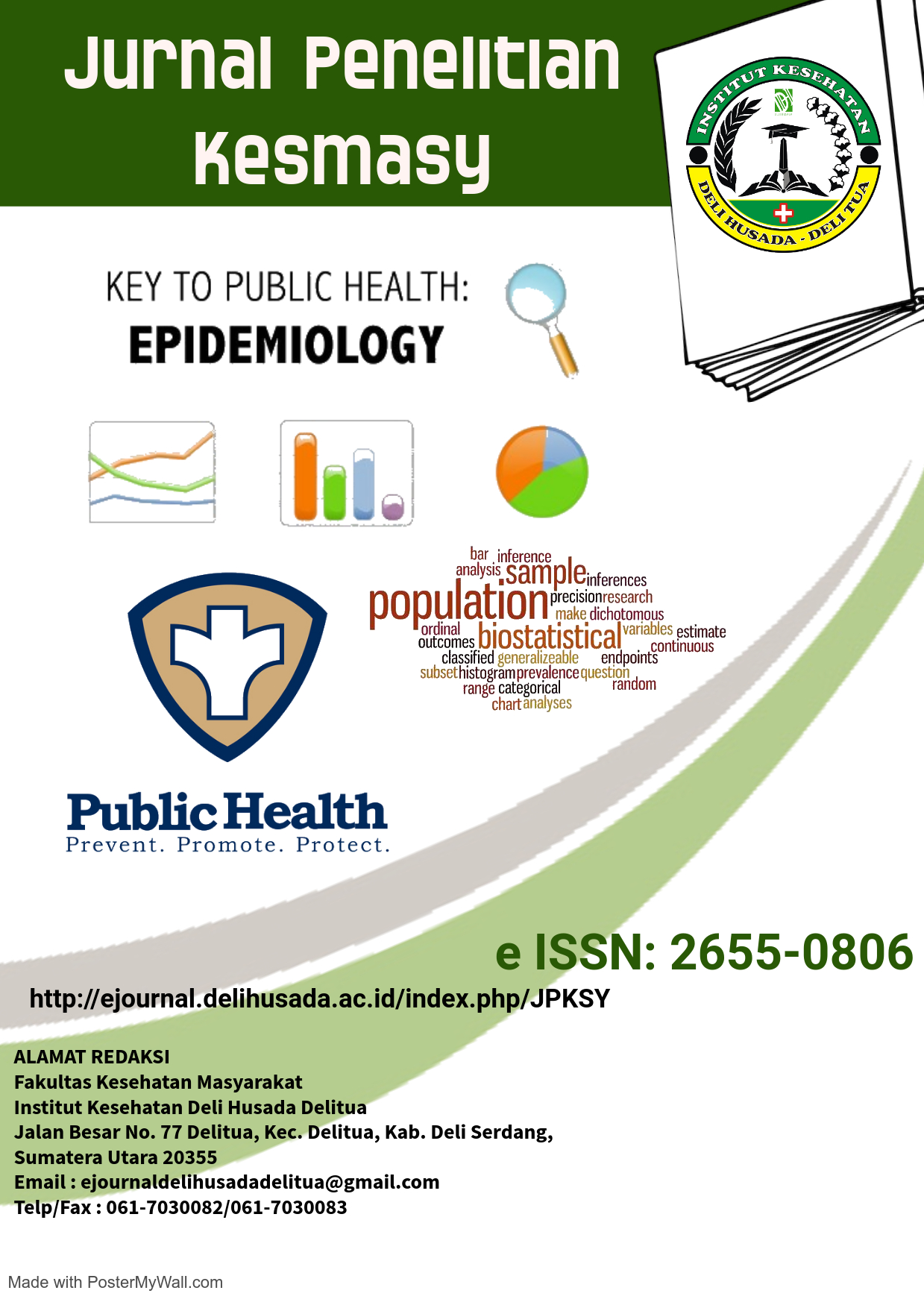HUBUNGAN ISI DAN CONTEN DATA DENGAN MANFAAT NYATA PENGGUNA SIMRS DI RUMAH SAKIT JIWA ACEH TAHUN 2023
Abstract
In the contemporary digital epoch, the deployment of Hospital Information Management Systems (SIMRS) has become paramount for the enhancement of healthcare service delivery. This investigation is predicated on discerning the correlation between the content of data, serving as the independent variable, and the tangible benefits procured from the utilization of SIMRS, the dependent variable, at the Aceh Mental Hospital during the year 2023. This study, adopting a quantitative research methodology and cross-sectional data accumulation method, garnered data via a meticulously structured questionnaire encompassing 20 items administered to the hospital personnel. The analysis of the accumulated data was performed by employing crosstab analysis and the Chi Square test, facilitated by the utilization of IBM SPSS statistical software. The findings from this research have illuminated a statistically significant correlation between the content of data and the tangible benefits derived from the utilization of SIMRS at the Aceh Mental Hospital, as indicated by a p-value of 0.036, which is less than the standard p-value of 0.05. Consequently, it can be extrapolated that the quality and categorization of data administered by SIMRS have a considerable influence on its effectiveness and benefits within the milieu of mental healthcare. Despite the significant findings, it is imperative to conduct further research employing diverse methodologies to attain.
References
Adisasmito. 2012. Sistem Kesehatan. Jakarta: PT. Gramedia Grafindo Persada
Aditama. 2003. Manajemen Administrasi Rumah Sakit. Jakarta: UI Press
Aedi, Nur. 2010. Instrumen Penelitian Pengumpulan Data. Bahan Belajar Mandiri Metode Penelitian Pendidikan. Jakarta: FIP-UP
Alif & Wulandari. 2012. Cerdas Memilih Rumah Sakit. Ed.I.-Yogy.ed. Benedicta Rini W. Yogyakarta: Raph
Arhami, Muhammad dan Muhammad Nasir. 2020. Data Mining Algoritma dan Implementasi. Yogyakarta: CV Andi Offset (Penerbit ANDI).
Bayu A., & Muhimmah, I. 2013. eval_uasi Faktor-Faktor Kesuksesan Implementasi Sistem Informasi manajemen Rumah Sakit di PKU Muhammadiyah Sruweng dengan Menggunakan
Bramantoro Taufan. 2017. Pengantar Klasifikasi dan Akreditasi Pelayanan Kesehatan, Surabaya: UNAIR (AUP)
Chaudhry, B., Wang, J., Wu, S., Maglione, M., Mojica, W., Roth, E., ... & Shekelle, P. G. (2006). Systematic review: impact of health information technology on quality, efficiency, and costs of medical care. Annals of internal medicine, 144(10), 742-752
Delone WH, McLean ER. The DeLone and McLean Model of Information Systems Success : A Ten-Year Update. J Manag Inf Syst. 2003;19(4):9– 30
Drury P. The e-health Agenda for Developing Countries. World Hospitals and Health Services. 2005;4:38–40
Edhy Sutanta. 2003. Sistem Informasi Manajemen. Graha Ilmu. Yogyakarta.
Jha, A. K., DesRoches, C. M., Campbell, E. G., Donelan, K., Rao, S. R., Ferris, T. G., ... & Blumenthal, D. (2009). Use of electronic health records in US hospitals. New England Journal of Medicine, 360(16), 1628-1638.
Gitman, Lawrence J. 2015. Principles of Management Finance 12th Edition.
Boston: Pearson Education
Menkes RI. 2013. Peraturan Menteri Kesehatan Nomor 55 Tahun 2013 tentang Penyelenggaraan Pekerjaan Perekam
Menteri Kesehatan. Sistem Informasi Manajemen Rumah Sakit. Republlik Indonesia, Nomor 82 Tahun 2013 Menteri Kesehatan; 2013. Available from http://www.buk.kemkes.go.id/.
Rikomah SE. 2017. Farmasi Rumah Sakit. Yogyakarta: Deepublish
Sabarguna BS. 2009. Manajemen Rumah Sakit. Jakarta: Sagung Seto.
Sofar Silaen. 2018. Metodologi Penelitian Sosial untuk Penulisan Skripsi dan Tesis. Bogor: IN MEDIA
Sugiyono. 2013. Metode Penelitian Pendidikan Pendekatan Kuantitatif, Kualitatif, dan R&D. Bandung: Alfabeta, CV.
Undang-Undang RI Nomor 44 Tahun 2009 tentang Rumah Sakit. Jakarta.
Yusof, M. M, et al. 2006. “Towards a Framework for Health Information Systems eval_uation”. Proceedings of the 39th Hawaii International Conference on System Science.







